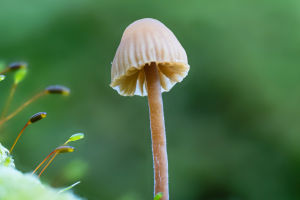The morning glory, a flower of unparalleled charm, has captivated many with its vibrant beauty and lively presence.
Scientifically known as “Ipomoea”, this plant belongs to the Convolvulaceae family and is Indigenous to the tropical and subtropical regions of the Americas.
Historically, morning glory has been revered since ancient Mayan and Aztec times, when it was considered a sacred plant and used for ritualistic and medicinal purposes. In these cultures, morning glory was esteemed not only for its striking flowers but also for its reputed healing properties.
One of the most fascinating characteristics of Morning Glory is its daily floral display. The flowers typically bloom in the morning and close as the sun rises, symbolizing the dawn of a new day.
Their funnel-shaped blooms with wavy edges are particularly enchanting. The array of colors ranges from classic blue and purple to vivid red and pink, satisfying a wide range of gardening preferences. These vibrant hues and forms evoke the freshness and vitality associated with the morning light.
In horticulture, morning glory is prized not only for its aesthetic appeal but also for its growth habits. It is a climbing plant that thrives in warm climates with ample sunlight.
Its vigorous growth allows it to cover expansive areas quickly, making it an excellent choice for ground cover or for climbing walls and fences, where it creates a lush, green barrier.
Cultivating morning glory is relatively straightforward but requires some fundamental care. This plant favors loose, well-drained soil and needs abundant sunlight to flourish. To enhance germination, soaking the seeds in water for 24 hours before planting is recommended.
Select a sunny location and ensure the soil remains moist, though not waterlogged, to promote healthy growth. Regular application of a mild fertilizer and timely removal of wilted flowers and leaves will encourage more prolific blooming.
Morning glory also carries rich symbolic meanings across various cultures. In Asian culture, it symbolizes new beginnings and hope, with its blooming seen as an omen of good fortune.
In Western cultures, it is often associated with joy and vitality, representing the renewal of life and the freshness of the morning. The flower’s beauty and symbolism have made it a popular motif in literature and art.
The morning glory is more than just a beautiful flower; it is a plant imbued with vitality and cultural significance. Whether admired in a garden or explored through cultural lenses, the morning glory reveals its distinctive charm and importance.
Its captivating blooms and deep symbolic meanings ensure its special place in both horticulture and cultural traditions, offering a touch of natural elegance and tranquility amid our busy lives.


